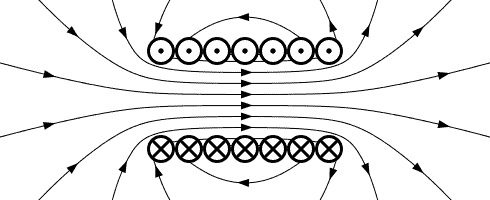With just one footstep, you can illuminate a thousand LED bulbs – with no batteries or power cord; the energy comes from rubbing two different materials together to create static electricity. A researcher called Zhong Lin Wang has finally learned how to harvest this power and put it to work.
Triboelectricity? What’s that ?!
A professor at the Georgia Institute of Technology, Wang is using what is called the triboelectric effect – a type of contact in which certain materials become electrically charged after they come into contact with another different material through friction. For example, when you rub glass with fur, or a comb through the hair, you are building triboelectricity. This has been known for a long time, nothing new here – but harvesting it… that’s an entirely different story, but Zhong figured it out.
He believes his discovery could potentially power mobile devices such as sensors and smartphones by capturing the otherwise wasted mechanical energy from walking, wind, and even rain. This is why, besides from powering electric devices, the technology could lead to a new generation of sensors, detecting vibrations, motion, water leaks, explosions, etc.
“We are able to deliver small amounts of portable power for today’s mobile and sensor applications,” said Wang, a Regents professor in Georgia Tech’s School of Materials Science and Engineering. “This opens up a source of energy by harvesting power from activities of all kinds.”
How it works
In its simplest form, a triboelectric generator works like this: you have 2 different materials – an electron donor and other an electron acceptor. Electrons flow from the donor to the acceptor. If the sheets are separated, one sheet holds an electrical charge isolated by the gap. If the electrical load is then connected to two electrodes placed at the outer edges of the two surfaces, a small current will flow to equalize the charges. If you continuously repeat this process (like in rubbing), you can generate an alternative current.
“The fact that an electric charge can be produced through triboelectrification is well known,” Wang explained. “What we have introduced is a gap separation technique that produces a voltage drop, which leads to a current flow in the external load, allowing the charge to be used. This generator can convert random mechanical energy from our environment into electric energy.”
When they initially started out, the energy out put was negligible. Since then, they managed to increase the power output density of their triboelectric generator by a factor of 100,000! This translates into a square meter of single-layer material producing as much as 300 watts.
“When two materials are in physical contact, the triboelectrification occurs,” said Wang, who holds the Hightower Chair in the Georgia Tech School of Materials Science and Engineering. “When they are moved apart, there is a gap distance created. To equalize the local charge, electrons have to flow. We are getting surprisingly high voltage and current flow from this. As of now, we have discovered four basic modes of triboelectric generators.”
Wang and his team accidentally discovered the power generating potential of the triboelectric effect while working on piezoelectric generators, which use an entirely different technology. The output from one of the piezoelectric device was way higher than expected – and this increased effect was found to be caused by triboelectricity.
Via Georgia Tech.







